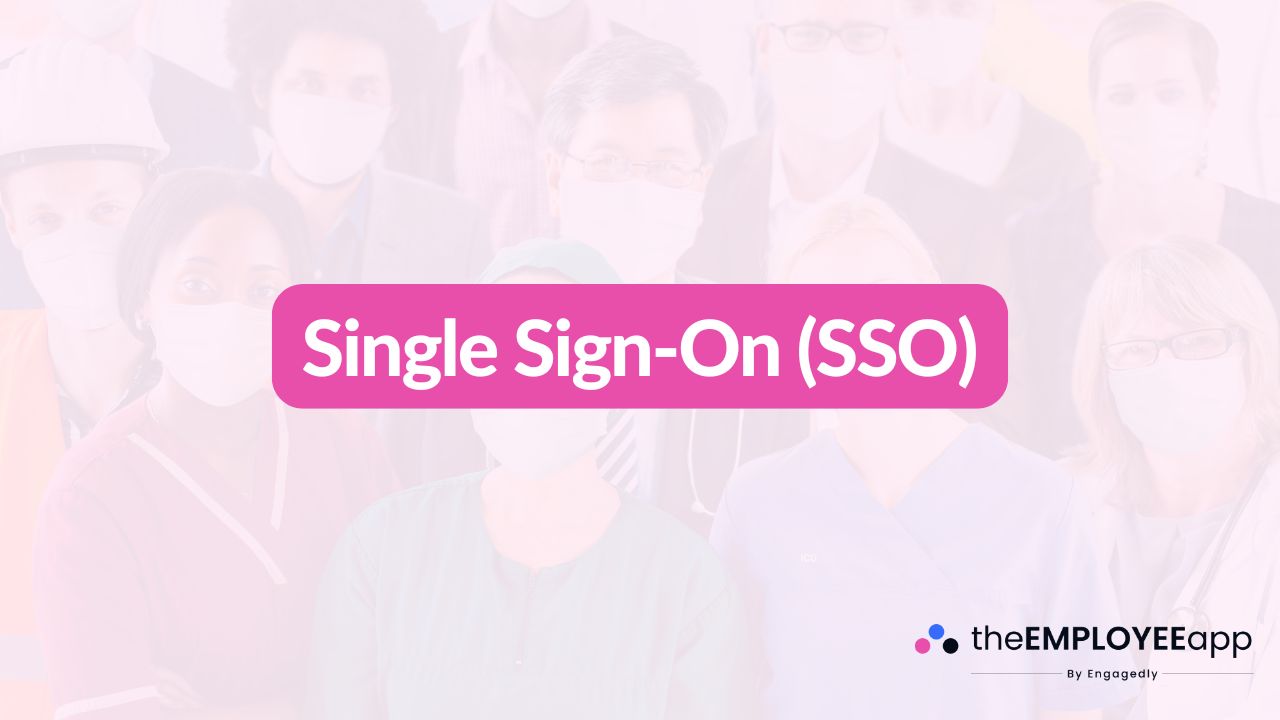
Single Sign-On (SSO) is an authentication method that allows users to log in once and gain access to multiple applications or systems without needing to re-enter their credentials. Instead of remembering different usernames and passwords for every platform, employees authenticate one time and then move seamlessly between tools.
For organizations with a growing tech stack and frontline employees who need quick access, SSO improves both security and user experience. It reduces password fatigue, minimizes login errors, and ensures employees spend less time logging in and more time doing meaningful work.
At its core, Single Sign-On is designed to simplify the authentication process. A central system verifies a user’s identity, and once approved, that authentication is shared across all integrated applications. For example, when an employee logs in at the start of their shift, they can access the intranet, scheduling system, training portal, and messaging app—without logging in separately to each one.
SSO is especially valuable for frontline workers who may not have company-issued laptops or complex IT setups. With one set of credentials, they can securely and efficiently access the digital tools they need, whether from a shared device or their own mobile phone.
SSO relies on a trusted relationship between an identity provider (the system that verifies the user) and service providers (the applications the user wants to access). Here’s how the process typically works:
User Logs In
The employee enters their credentials once on the identity provider’s login page.
Authentication
The identity provider verifies the credentials against a central database.
Token Exchange
Once authenticated, a secure token is created that confirms the user’s identity.
Access Granted
That token is shared with other connected applications, allowing the user to move across platforms without re-entering credentials.
This process usually takes just seconds and is invisible to the end user.
Improved Security
With fewer passwords to remember, employees are less likely to reuse weak credentials. Stronger authentication practices like multifactor authentication (MFA) can be integrated into the SSO process for added protection.
Better User Experience
Employees don’t waste time logging in repeatedly. SSO makes it easy to navigate between systems and reduces frustration with password resets.
Efficiency and Productivity
Less time spent dealing with login barriers means more time focused on work. For frontline teams, this can directly impact service quality and customer satisfaction.
Centralized Access Management
IT administrators can manage user access more effectively. Adding or removing employees from the system automatically updates their access across all integrated tools.
Reduced IT Costs
Fewer password reset requests free up IT resources and reduce overhead.
Frontline employees often face unique challenges when it comes to technology access. They may share devices, work across multiple locations, or use personal phones for company apps. Without SSO, logging into different systems with multiple passwords can become a barrier.
With Single Sign-On, organizations can ensure that frontline staff have seamless access to scheduling systems, compliance training, communication platforms, and HR tools—all without the frustration of juggling multiple logins. This not only improves productivity but also makes technology adoption easier for employees who aren’t desk-based.
While SSO improves convenience, organizations must implement it carefully to maintain security. If a user’s single set of credentials is compromised, it could grant access to multiple systems. To mitigate this risk, companies often combine SSO with multifactor authentication (MFA), session timeouts, and strong monitoring practices.
The right balance between ease of access and robust security helps organizations get the most value out of SSO.
Modern organizations rely on dozens of apps for communication, HR, scheduling, training, and compliance. Without SSO, navigating between them becomes a burden. With it, employees gain faster, more secure access, while administrators gain better oversight of digital access points.
In industries where frontline workers need quick, reliable access to company systems, SSO is not just a convenience—it’s a necessity. By reducing friction and improving security, it creates a more connected and productive workforce.
Single Sign-On (SSO) streamlines authentication, strengthens security, and creates a better user experience. It’s particularly powerful for frontline organizations that need to balance ease of access with strong compliance and security requirements.
By adopting SSO, companies simplify technology use, reduce IT costs, and empower their employees with seamless access to the tools they need. In today’s fast-paced workplace, where time and security are both critical, Single Sign-On has become an essential part of modern workforce technology.
